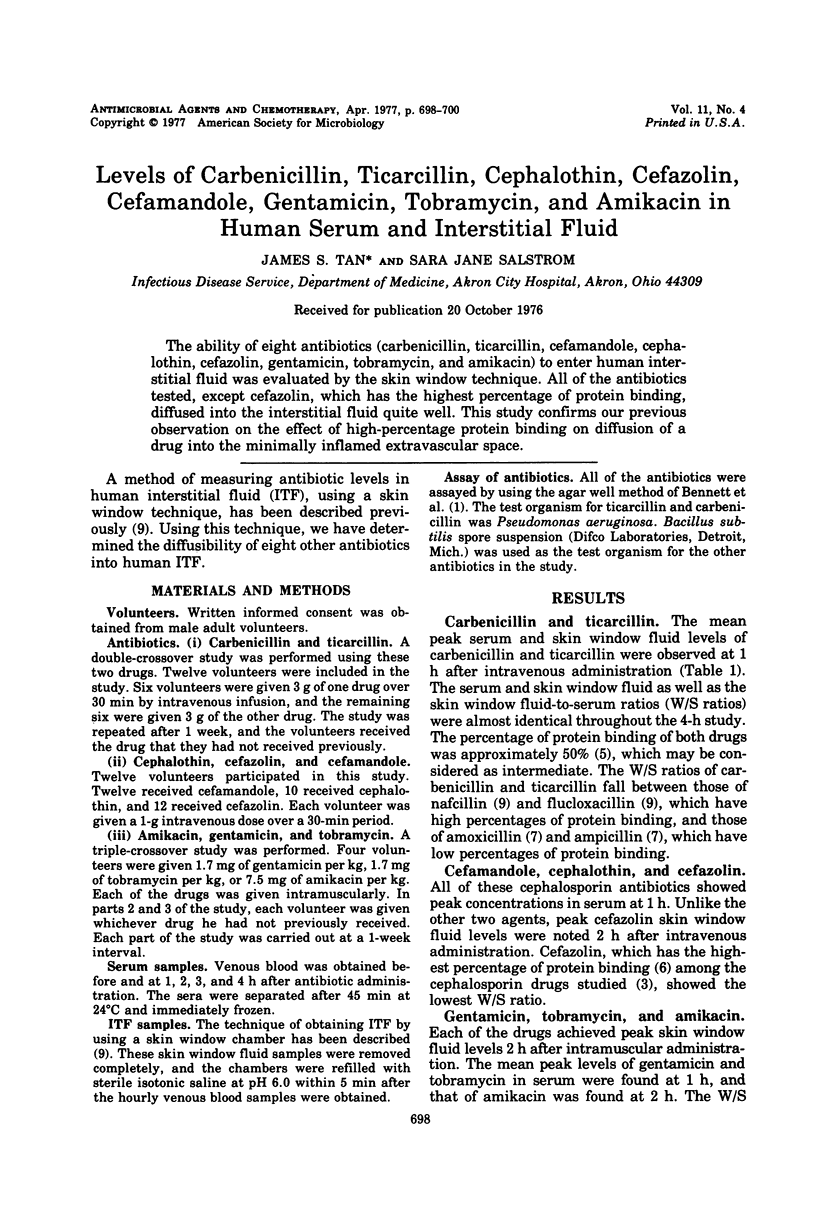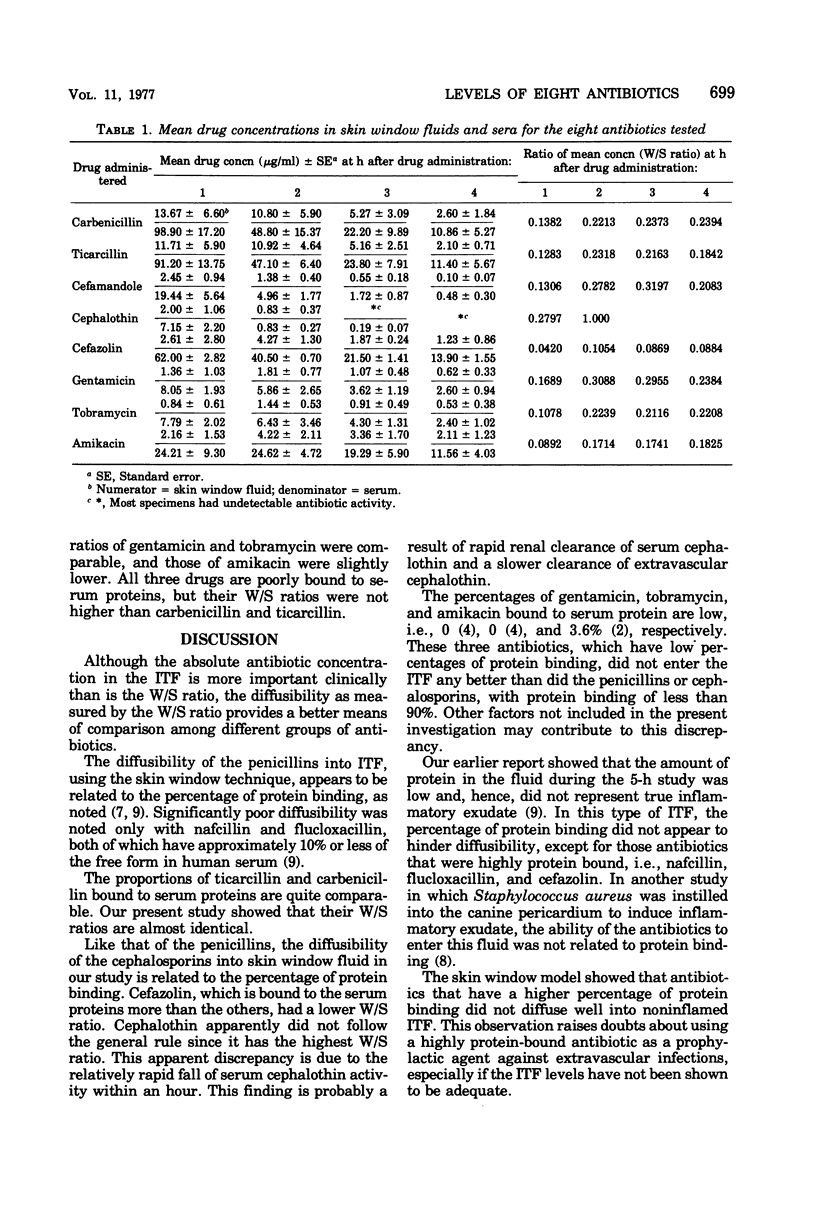Abstract
The ability of eight antibiotics (carbenicillin, ticarcillin, cefamandole, cephalothin, cefazolin, gentamicin, tobramycin, and amikacin) to enter human interstitial fluid was evaluated by the skin window technique. All of the antibiotics tested, except cefazolin, which has the highest percentage of protein binding, diffused into the interstitial fluid quite well. This study confirms our previous observation on the effect of high-percentage protein binding on diffusion of a drug into the minimally inflamed extravascular space.
Full text
PDF


Selected References
These references are in PubMed. This may not be the complete list of references from this article.
- Bennett J. V., Brodie J. L., Benner E. J., Kirby W. M. Simplified, accurate method for antibiotic assay of clinical specimens. Appl Microbiol. 1966 Mar;14(2):170–177. doi: 10.1128/am.14.2.170-177.1966. [DOI] [PMC free article] [PubMed] [Google Scholar]
- Clarke J. T., Libke R. D., Regamey C., Kirby W. M. Comparative pharmacokinetics of amikacin and kanamycin. Clin Pharmacol Ther. 1974 Jun;15(6):610–616. doi: 10.1002/cpt1974156610. [DOI] [PubMed] [Google Scholar]
- Fong I. W., Ralph E. D., Engelking E. R., Kirby W. M. Clinical pharmacology of cefamandole as compared with cephalothin. Antimicrob Agents Chemother. 1976 Jan;9(1):65–69. doi: 10.1128/aac.9.1.65. [DOI] [PMC free article] [PubMed] [Google Scholar]
- Gordon R. C., Regamey C., Kirby W. M. Serum protein binding of the aminoglycoside antibiotics. Antimicrob Agents Chemother. 1972 Sep;2(3):214–216. doi: 10.1128/aac.2.3.214. [DOI] [PMC free article] [PubMed] [Google Scholar]
- Libke R. D., Clarke J. T., Ralph E. D., Luthy R. P., Kirby W. M. Ticarcillin vs carbenicillin: clinical pharmacokinetics. Clin Pharmacol Ther. 1975 Apr;17(4):441–446. doi: 10.1002/cpt1975174441. [DOI] [PubMed] [Google Scholar]
- Moellering R. C., Jr, Swartz M. N. Drug therapy: The newer cephalosporins. N Engl J Med. 1976 Jan 1;294(1):24–28. doi: 10.1056/NEJM197601012940106. [DOI] [PubMed] [Google Scholar]
- Tan J. A., Bannister T., Phair J. P. Levels of amoxicillin and ampicillin in human serum and interstitial fluid. J Infect Dis. 1974 Jun;129(0):suppl–suppl:S148. doi: 10.1093/infdis/129.supplement_2.s146. [DOI] [PubMed] [Google Scholar]
- Tan J. S., Holmes J. C., Fowler N. O., Manitsas G. T., Phair J. P. Antibiotic levels in pericardial fluid. J Clin Invest. 1974 Jan;53(1):7–12. doi: 10.1172/JCI107561. [DOI] [PMC free article] [PubMed] [Google Scholar]
- Tan J. S., Trott A., Phair J. P., Watanakunakorn C. A method for measurement of antibiotics in human interstitial fluid. J Infect Dis. 1972 Nov;126(5):492–497. doi: 10.1093/infdis/126.5.492. [DOI] [PubMed] [Google Scholar]


